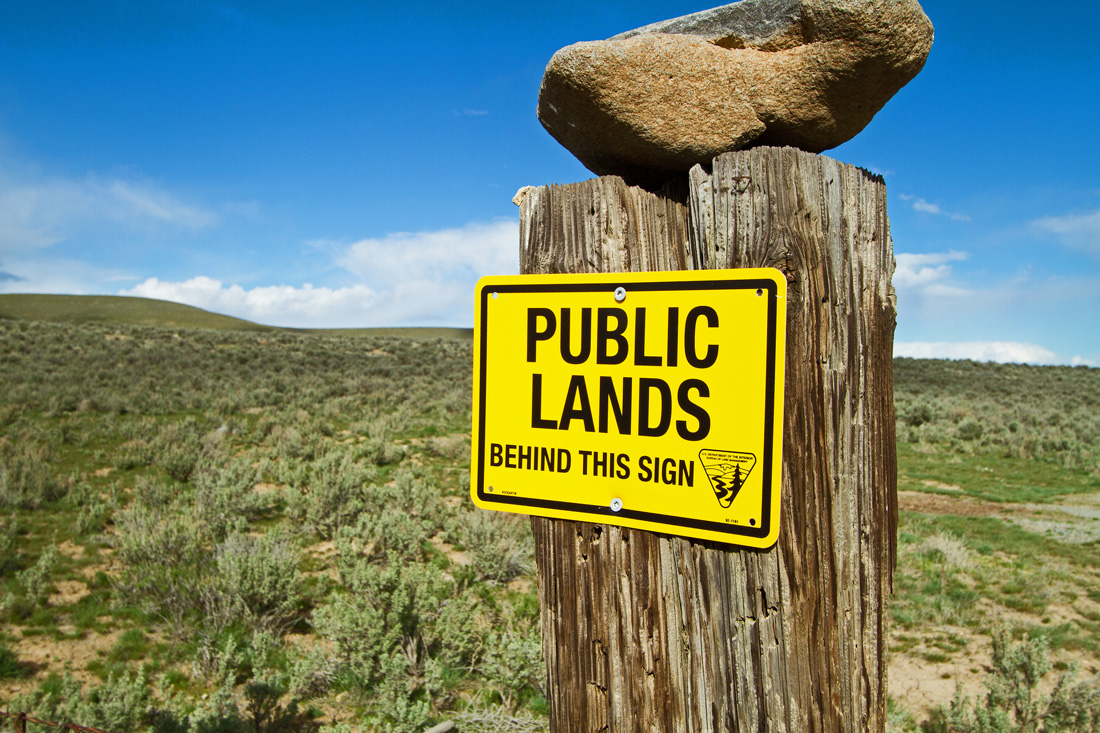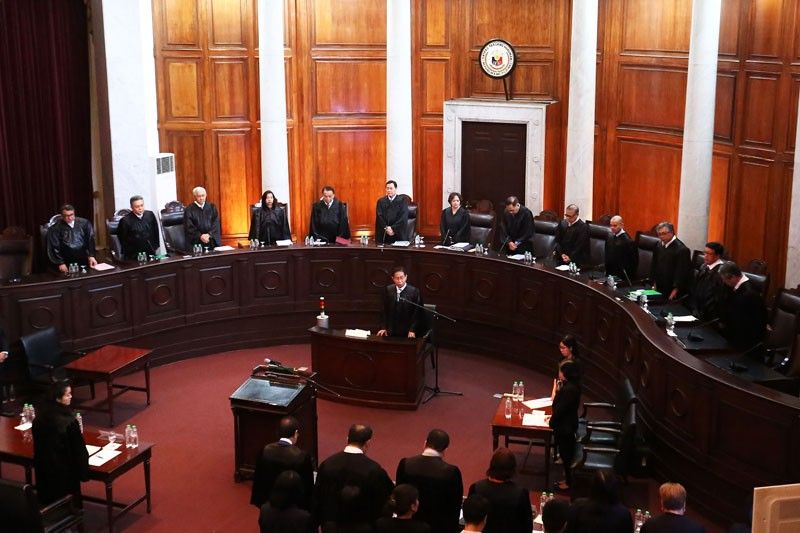Classification, reclassification of public lands
 While in 1955 the President - through Presidential Proclamation No. 209 declared particular lands in Baguio City as alienable and disposable, they may have been re-classified by the President thereafter. This is precisely the reason why an applicant for registration of title based on an executive proclamation is required to present evidence on the alienable and disposable character of the land applied for. Such as a certificate of land classification status from the Department of Environment and Natural Resources (DENR), which only the Community Environment and Natural Resources Officer[2] (CENRO) and the Provincial Environment and Natural Resources Officer[3] (PENRO) are authorized to issue under DENR Administrative Order No. 38,[4] series of 1990 (DAO 38).
While in 1955 the President - through Presidential Proclamation No. 209 declared particular lands in Baguio City as alienable and disposable, they may have been re-classified by the President thereafter. This is precisely the reason why an applicant for registration of title based on an executive proclamation is required to present evidence on the alienable and disposable character of the land applied for. Such as a certificate of land classification status from the Department of Environment and Natural Resources (DENR), which only the Community Environment and Natural Resources Officer[2] (CENRO) and the Provincial Environment and Natural Resources Officer[3] (PENRO) are authorized to issue under DENR Administrative Order No. 38,[4] series of 1990 (DAO 38).
In Republic v. Cortez,[5] the Supreme Court made the following pronouncement:
It must be stressed that incontrovertible evidence must be presented to establish that the land subject of the application is alienable or disposable.Similarly, in Republic v. Roche, the Supreme Court declared that:
In the present case, the only evidence to prove the character of the subject lands as required by law is the notation appearing in the Advance Plan stating in effect that the said properties are alienable and disposable. However, this is hardly the kind of proof required by law. To prove that the land subject of an application for registration is alienable, an applicant must establish the existence of a positive act of the government such as a presidential proclamation or an executive order, an administrative action, investigation reports of Bureau of Lands investigators, and a legislative act or statute. The applicant also secure a certification from the Government that the lands applied for are alienable and disposable. In the case at bar, while the Advance Plan bearing the notation was certified by the Lands Management Services of the DENR, the certification refers only to the technical correctness of the survey plotted in the said plan and has nothing to do whatsoever with the nature and character of the property surveyed. Respondents failed to submit a certification from the proper government agency to prove that the lands subject for registration are indeed alienable and disposable. (Emphasis in the original)
Respecting the third requirement, the applicant bears the burden of proving the status of the land. In this connection, the [Supreme] Court has held that he must present a certificate of land classification status issued by the Community Environment and Natural Resources Office (CENRO) or the Provincial Environment and Natural Resources Office (PENRO) of the DENR. He must also prove that the DENR Secretary had approved the land classification and released the land as alienable and disposable, and that it is within the approved area per verification through survey by the CENRO or PENRO. Further, the applicant must present a copy of the original classification approved by the DENR Secretary and certified as true copy by the legal custodian of the official records. These facts must be established by the applicant to prove that the land is alienable and disposable. (Emphasis in the original)The annotation in the survey plan presented by Cortez is not the kind of evidence required by law as proof that the subject property forms part of the alienable and disposable land of the public domain. Cortez failed to present a certification from the proper government agency as to the classification of the subject property. Cortez likewise failed to present any evidence showing that the DENR Secretary had indeed classified the subject property as alienable and disposable. Having failed to present any incontrovertible evidence, Cortez' claim that the subject property forms part of the alienable and disposable lands of the public domain must fail. (Emphasis supplied)
Here, Roche did not present evidence that the land she applied for has been classified as alienable or disposable land of the public domain. She submitted only the survey map and technical description of the land which bears no information regarding the land's classification. She did not bother to establish the status of the land by any certification from the appropriate government agency. Thus, it cannot be said that she complied with all requisites for registration of title under Section 14(1) of P.D. 1529.
Later, another pronouncement was made in Fortuna v. Republic,[6] stating thus:
Under Section 6 of the PLA,[7] the classification and the reclassification of public lands are the prerogative of the Executive Department. The President, through a presidential proclamation or executive order, can classify or reclassify a land to be included or excluded from the public domain. The Department of Environment and Natural Resources (DENR) Secretary is likewise empowered by law to approve a land classification and declare such land as alienable and disposable. Accordingly, jurisprudence has required that an applicant for registration of title acquired through a public land grant must present incontrovertible evidence that the land subject of the application is alienable or disposable by establishing the existence of a positive act of the government, such as a presidential proclamation or an executive order; an administrative action; investigation reports of Bureau of Lands investigators; and a legislative act or a statute.
In this case, the C A declared that the alienable nature of the land was established by the notation in the survey plan, which states:
This survey is inside alienable and disposable area as per Project No. 13 L.C. Map No. 1395 certified August 7, 1940. It is outside any civil or military reservation.It also relied on the Certification dated July 19, 1999 from the DENR Community Environment and Natural Resources Office (CENRO) that "there is, per record, neither any public land application filed nor title previously issued for the subject parcel[.]" However, we [the Supreme Court] find that neither of the above documents is evidence of a positive act from the government reclassifying the lot as alienable and disposable agricultural land of the public domain.
Mere notations appearing in survey plans are inadequate proof of the covered properties' alienable and disposable character. These notations, at the very least, only establish that the land subject of the application for registration falls within the approved alienable and disposable area per verification through survey by the proper government office. The applicant, however, must also present a copy of the original classification of the land into alienable and disposable land, as declared by the DENR Secretary or as proclaimed by the President. In Republic v. Heirs of Juan Fabio, the Court ruled that
[t]he applicant for land registration must prove that the DENR Secretary had approved the land classification and released the land of the public domain as alienable and disposable, and that the land subject of the application for registration falls within the approved area per verification through survey by the PENRO or CENRO. In addition, the applicant must present a copy of the original classification of the land into alienable and disposable, as declaredJpy the D,ENR Secretary, or as proclaimed by the President.The survey plan and the DENR-CENRO certification are not proof that the President or the DENR Secretary has reclassified and released the public land as alienable and disposable. The offices that prepared these documents are not the official repositories or legal custodian of the issuances of the President or the DENR Secretary declaring the public land as alienable and disposable.
For failure to present incontrovertible evidence that Lot No. 4457 has been reclassified as alienable and disposable land of the public domain though a positive act of the Executive Department, the spouses Fortuna's claim of title through a public land grant under the PLA should be denied. (Emphasis supplied and/or in the original)
Yet again, in another subsequent decision of the Supreme Court in Remman Enterprises, Inc. v. Republic,[8] it was held that —
The burden of proof in overcoming the presumption of Sate ownership of the lands of the public domain is on the person applying for registration, who must prove that the properties subject of the application are alienable and disposable. Even the notations on the survey plans submitted by the petitioner cannot be admitted as evidence of the subject properties' alienability and disposability. Such notations do not constitute incontrovertible evidence to overcome the presumption that the subject properties remain part of the inalienable public domain. (Emphasis supplied)
Thus, while judicial notice of Presidential Proclamation No. 209 may be taken, the DENR certificate of land classification status or any other proof of the alienable and disposable character of the land may not be dispensed with, because it provides a more recent appraisal of the classification of the land as alienable and disposable, or that the land has not been re-classified in the meantime. The applicable law - Section 14(1) of Presidential Decree No. 1529 - requires that the property sought to be registered is alienable and disposable at the time the application for registration of title is filed;[9] one way of establishing this material fact is through the DENR certificate of land classification status which is presumed to be the most recent appraisal of the status and character of the property.
The ruling in Republic v. Serrano[10] cannot be controlling. Instead, we must apply the pronouncements in Republic v. Cortez, Fortuna v. Republic, and Remman Enterprises, Inc. v. Republic, as they are more recent and in point. Besides, these cases accurately ratiocinate that such notations or certifications in approved survey plans refer only to the technical correctness of the surveys plotted in these plans and have nothing to do whatsoever with the nature and character of the properties surveyed, and that they only establish that the land subject of the application for registration falls within the approved alienable and disposable per verification through survey by the proper government office; they do not indicate at all that the property sought to be registered is alienable and disposable at the time the application for registration of title is filed.
[1] C.A. No. 141, or the Public Land Act, Section 6.
Sec. 6. The President, upon the recommendation of the Secretary of Agriculture and Natural Resources, shall from time to time classify the lands of the public domain into: (a) Alienable or disposable, (b) Timber, and (c) Mineral lands, and may at any time and in a like manner transfer such lands from one class to another, for the purposes of their administration and disposition.
[2] For areas below 50 hectares.
[3] For areas exceeding 50 hectares.
[4] REVISED REGULATIONS ON THE DELINEATION OF FUNCTIONS AND DELEGATION OF AUTHORITIES, April 19, 1990.
[5] G.R. No. 186639, February 5, 2014, 715 SCRA 416, 427-429.
[6] G.R. No. 173423, March 5, 2014.
[7] PUBLIC LAND ACT, or C.A. No. 141.
[8] G.R. No. 188494, November 26, 2014.
[9] Republic v. Zurbaran Realty and Development Corporation, G.R. No. 164408, March 24, 2014.
[10] THE PUBLIC LAND ACT.







0 Comments